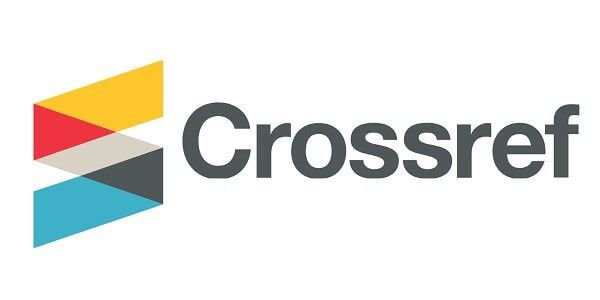Crime Forecasting Model Using Id3 Algorithm
Keywords:
Data Analytics, Machine Learning, Crime Analysis, ID3 AlgorithmAbstract
Crime has been a significant concern in every community, as it brings a negative impact on the economy as well as damages to people’s lives and property. A total of 107,538 index crimes were recorded in 2019 (Philippine Statistics Authority, 2021), clearly showing that crime is a major area of concern for the government. Being able to identify significant patterns in crime data would result in a reduction in the crime rate. The study implements the iterative dichotomiser 3(ID3) algorithm to analyze crime patterns in the Philippines. This data analytic approach evaluates significant patterns in identifying key areas that need immediate concern based on data published by the crime research analysis center of the office of the Directorate for investigation and detective management of the Philippine National Police for the period of January to March 2018. Upon the application of the ID3 technique, four significant criteria are used, namely region, robbery incident killed, robbery incident wounded, and shooting incident. The computation for the entropy and gain is obtained from which attribute selection is derived. Among the four attributes from 23 records available, the highest information gain is treated as the most important criterion, and the results show that upon implementing the Shannon entropy calculation, the wounded in a shooting incident obtained the highest information gain and requires immediate attention in region 4A. An evaluation process has been conducted using relative absolute error, mean absolute error (MAE), and F1 score to determine the accuracy of the crime model, and it was able to obtain a value of 95.2827, 0.2964, and 0.905, respectively.
References
Afroz, F. (n.d.). Crime analysis and prediction using data mining – A survey (pp. 1–6). https://www.academia.edu/29791461/Crime_Analysis_and_Prediction_Using_Data_Mining_CAP_a_Survey
Almuhanna, A. A., Alrehili, M. M., Alsubhi, S. H., & Syed, L. (2021). Prediction of crime in neighbourhoods of New York City using spatial data analysis. 2021 1st International Conference on Artificial Intelligence and Data Analytics (CAIDA), 23–30. https://doi.org/10.1109/CAIDA51941.2021.9425120 DOI: https://doi.org/10.1109/CAIDA51941.2021.9425120
AL-Huseiny, M. (2015). An e-learning environment based on the Moodle platform for Iraq universities. Wasit Journal of Engineering Sciences, 3(2), 5–67. DOI: https://doi.org/10.31185/ejuow.Vol3.Iss2.39
Alvarez, J. K., Hadjiri, F., Alfaro, R. G., Book, C., Pelisan, C. K., Bechavez, R. C., Molina, R., & Kong, J. (2021). Crime rate in Zamboanga City: Before and during quarantine period. International Journal of Academic Research in Business and Social Sciences, 11(3). https://doi.org/10.6007/ijarbss/v11-i3/8935 DOI: https://doi.org/10.6007/IJARBSS/v11-i3/8935
Braun, V., & Clarke, V. (2019). Reflecting on reflexive thematic analysis. Qualitative Research in Sport, Exercise and Health, 11(4), 589–597. https://doi.org/10.1080/2159676X.2019.1628806 DOI: https://doi.org/10.1080/2159676X.2019.1628806
Braunschweigh, D. (n.d.). Input-process-output model. Rebus Community. Programming Fundamentals. Creative Commons Attribution-ShareAlike 4.0 International License.
Campanella, P., & Impedovo, S. (2015). Innovative methods for the e-learning recommendation. 2015 5th International Conference on Digital Information Processing and Communications (ICDIPC), 312–317. DOI: https://doi.org/10.1109/ICDIPC.2015.7323047
Calaprice, A. (2010). The quotable Einstein. http://www.goodreads.com
Charnock, N. (2016). Teaching methods for balancing chemical equations: An inspection versus an algebraic approach. http://pubs.sciepub.com/education/4/7/2/index.html
Creswell, J. W. (2014). Research design: Qualitative, quantitative and mixed methods approaches (4th ed.). Sage.
Creswell, J. W., & Plano Clark, V. L. (2011). Designing and conducting mixed methods research (2nd ed.). Sage.
Curtis, H. (1922). The algebraic method of balancing a chemical equation. Science, 56(1444), 258–260. http://www.jstor.org/stable/1647136 DOI: https://doi.org/10.1126/science.56.1444.258
Edralin, D., & Pastrana, R. (2022). Advancing the pursuit of the United Nations Sustainable Development Goals: Initiatives of selected publicly listed companies in the Philippines. DOI: https://doi.org/10.58870/berj.v7i1.31
Fabito, B. S., Lacasandile, A. D., Trillanes, A. O., & Yabut, E. R. (2017). Leveraging crime reporting in Metro Manila using unsupervised crowd-sourced data: A case for the iReport framework. 2017 International Conference on Control, Electronics, Renewable Energy, and Communications (ICCEREC), 231–235. https://doi.org/10.1109/ICCEREC.2017.8226681 DOI: https://doi.org/10.1109/ICCEREC.2017.8226681
Filatov, V., Zolotukhin, O., Yerokhin, A., & Kudryavtseva, M. (2019). Personalized adaptation of learning environments. Proceedings of the International Conference on Advanced Optoelectronics and Lasers (CAOL), 584–587. DOI: https://doi.org/10.1109/CAOL46282.2019.9019525
Gabriel, C. I., & Onwuka, G. I. (2015). Balancing of chemical equations using matrix algebra. Journal of Natural Sciences Research, 3, 29–36.
Geddawy, Y. (2019). Adaptive multi-agent assisting framework for personal teaching environment. Proceedings - Frontiers in Education Conference. DOI: https://doi.org/10.1109/FIE43999.2019.9028354
Gibbs, G. R. (2007). Qualitative research kit: Analyzing qualitative data. Sage. https://doi.org/10.4135/9781849208574 DOI: https://doi.org/10.4135/9781849208574
Grossi, M., De Elias, M., Chamon, C., & Leal, D. (2018). The educational potentialities of the virtual learning environments Moodle and Canvas: A comparative study. International Journal of Information and Education Technology, 8(7), 514–519. DOI: https://doi.org/10.18178/ijiet.2018.8.7.1091
Hamid, I. (2019). Balancing chemical equations by systems of linear equations. Applied Mathematics, 10, 521–526. https://doi.org/10.4236/am.2019.107036 https://www.researchgate.net/publication/334396583_Balancing_Chemical_Equations_by_Systems_of_Linear_Equations DOI: https://doi.org/10.4236/am.2019.107036
Hassan, M., & Hamada, M. (2017). Enhancing learning objects recommendation using multi-criteria recommender systems. 2016 IEEE International Conference on Teaching, Assessment, and Learning for Engineering (TALE), 62–64. DOI: https://doi.org/10.1109/TALE.2016.7851771
Hariharan, M. (2019). Teaching style recommender using machine learning. Proceedings of the 1st International Conference on Advances in Information Technology. DOI: https://doi.org/10.1109/ICAIT47043.2019.8987364
Intellectual Property Office of the Philippines (IPOPHIL). (n.d.). http://www.ipophil.gov.ph
kotlinlang.org. (n.d.). Kotlin v.16.21 website. https://kotlinlang.org/docs/faq.html#where-can-i-get-an-hd-kotlin-logo
Kularbphettong, K., Somngam, S., Tongsiri, C., & Roonrakwit, P. (2014). A recommender system using collaborative filtering and K-mean based on android application. Journal of Theoretical and Applied Information Technology, 70(1), 90–94.
MacCuspie, R. I., & Drake, C. (2014). A framework for identifying performance targets for sustainable materials. Science Direct, 1-2, 17–25. DOI: https://doi.org/10.1016/j.susmat.2014.11.003
Maghanoy, J. A. W. (2017). Crime mapping report mobile application using GIS. 2017 IEEE 2nd International Conference on Signal and Image Processing (ICSIP), 247–251. https://doi.org/10.1109/SIPROCESS.2017.8124542 DOI: https://doi.org/10.1109/SIPROCESS.2017.8124542
Mpungose, C., & Khoza, S. (2020). Postgraduate students’ experiences on the use of Moodle and Canvas learning management system. Technology, Knowledge and Learning. https://doi.org/10.1007/s10758-020-09475-x DOI: https://doi.org/10.1007/s10758-020-09475-1
Murad, D., Heryadi, Y., Wijanarko, B., Isa, I., & Budiharto, W. (2019). Recommendation system for smart LMS using machine learning: A literature review. Proceedings of the 2018 4th International Conference on Computer Engineering and Design (ICCED), 113–118. DOI: https://doi.org/10.1109/ICCED.2018.00031
Panja, B., Meharia, P., & Mannem, K. (2020). Crime analysis mapping, intrusion detection using data mining. 2020 IEEE Technology and Engineering Management Conference (TEMSCON), 6–10. https://doi.org/10.1109/TEMSCON47658.2020.9140074 DOI: https://doi.org/10.1109/TEMSCON47658.2020.9140074
Parker, C., Scott, S., & Geddes, A. (2019). Snowball sampling. SAGE Research Methods Foundations. (In Press)
Poulova, P., Simonova, I., & Manenova, M. (2015). Which one, or another? Comparative analysis of selected LMS. Procedia - Social and Behavioral Sciences, 186, 1302–1308. DOI: https://doi.org/10.1016/j.sbspro.2015.04.052
Rada, E. (2022). Language-based approach in achieving Sustainable Development Goals: A qualitative meta-analysis. DOI: https://doi.org/10.58870/berj.v7i1.37
Richey, R. (1994). Developmental research: The definition and scope. ERIC. https://eric.ed.gov/?id=ED373753
Saberon, C. B. (2021). Development and pilot validation of E-SCRIBE: An e-learning aid that utilizes algebraic expressions in solving chemical reaction problems (Unpublished master’s thesis). The National Teachers College.
Sandy, R., Baculinao, H., & Ceballos, R. F. (2019). An analysis on the location and type of index crimes in the Philippines. https://psa.gov.ph/sites/default/files/8.6.2%20An%20Analysis%20on%20the%20Location%20and%20Type%20of%20Index%20Crimes%20in%20the%20Philippines_0.pdf
Sciences, M. (2021). Crime analysis using data mining techniques and algorithms. May.
Sethupathi, M., & Naresh, R. R. S. (2018). Expert recommendation for crime prediction using data mining techniques. 390–395.
Singh, T., Singla, V., & Bhatia, P. (2016). Score and winning prediction in cricket through data mining. International Conference on Soft Computing Techniques and Implementations (ICSCTI), 60–66. DOI: https://doi.org/10.1109/ICSCTI.2015.7489605
Srivastava, R., Nigam, S., Srivastava, K., Verma, M., Gorakhpur, M., & Pradesh, U. (2022). Crime prediction and policing. 3, 243–250.
Sutton, M. (2020, September 21). How to develop a new product (from concept to market). https://www.shopify.com.ph/blog/product-development-process
Syed, T. (2017). A personalized learning recommendation system architecture for learning management system. Proceedings of the 9th International Joint Conference on Knowledge Discovery, Knowledge Engineering and Knowledge Management (IC3K). DOI: https://doi.org/10.5220/0006513202750282
Tiphrak, S., & Kurutach, W. (2015). Ubiquitous computing technologies and context aware recommender systems for ubiquitous learning. Proceedings of the 12th International Conference on Electrical Engineering/Electronics, Computer, Telecommunication and Information Technology. DOI: https://doi.org/10.1109/ECTICon.2015.7206939
United Nations Department of Economic and Social Affairs (UN DESA). (2020). SDGs learning, training and practice - 2020 edition report. http://www.sdgs.un.org
Vasquez, J. (2018). The importance of mathematics in the development of science and technology [PDF]. http://verso.mat.uam.es/~juanluis.vazquez/reptmath.pdf
Wonoseto, M., & Rosmansyah, Y. (2017). Knowledge based recommender system and web 2.0 to enhance learning model in junior high school. 2017 International Conference on Information Technology Systems Innovation (ICITSI), 168–171. DOI: https://doi.org/10.1109/ICITSI.2017.8267937
Published
How to Cite
Issue
Section
Copyright (c) 2025 Rosemarie Perreras, Jake Libed

This work is licensed under a Creative Commons Attribution-NonCommercial-NoDerivatives 4.0 International License.











